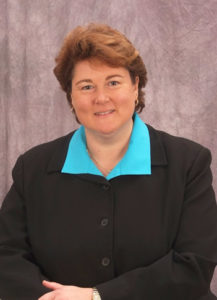By Leslie Texas and Renee’ Yates
In two previous articles – “What is the Mathematics Design Collaborative?” and “It’s all about the ‘C’ in MDC” – we discussed the work of the Mathematics Design Collaborative (MDC) and the importance of engaging in conversations about mathematics teaching and learning.

Leslie Texas
As consultants involved in MDC, although representing different organizations, we formed our own professional learning community and have been collaborating for the past four years. It was this relationship that prompted us to realize the need for a follow up, co-written, as an example of the power of professional learning communities (PLCs) in supporting the work of MDC. Together, we share how the PLC structure supports the work of the Mathematics Design Collaborative.
Professional learning communities are part of the Kentucky Department of Education’s standards for professional learning. These standards were adopted in October 2013 and were derived from the Learning Forward’s standards for professional learning.
Professional learning within communities requires continuous improvement, promotes collective responsibility, and supports the alignment of individual, team, school and school system goals. Learning communities meet regularly and frequently during the workday to engage in collaborative professional learning to strengthen teacher practice and increase student results.
Learning community members are accountable to one another to achieve the shared goals of the school and school system and work in transparent, authentic settings that support their improvement. For more information, see Learning Forward’s page on learning communities.

Renee’ Yates
There are many advantages of learning communities, such as teachers developing collective responsibility for student learning, the community becoming results oriented, and community members aligning adult learning goals with student learning goals and holding each other accountable. PLCs may help your school by:
Engaging in continuous improvement
Learning communities apply a cycle of continuous improvement to engage in inquiry, action research, data analysis, planning, implementation, reflection and evaluation. The seven-step cycle of continuous improvement include:
- The use of data to determine student and educator learning needs;
- Identification of shared goals for student and educator learning;
- Professional learning to extend educators’ knowledge of content, content-specific pedagogy, how students learn and management of classroom environments;
- Selection and implementation of appropriate evidence-based strategies to achieve student and educator learning goals;
- Application of the learning with local support at the work site;
- Use of evidence to monitor and refine implementation; and
- Evaluation of results.
(Source: Kentucky Professional Learning Guidance)
Developing collective responsibility
Learning communities share collective responsibility for the learning of all students within the school or school system. The communities may vary in size and membership.
Learning communities tap internal and external expertise and resources to strengthen practice and student learning. As teachers collaborate and discuss student work – looking for student understandings and misunderstanding of content – they begin to share ideas about instructional shifts and strategies to deepen understanding of student learning. Teachers truly become a community of learners constantly working on their craft of teaching.
Creating alignment and accountability
Professional learning communities should provide an ongoing system of support for continuous improvement for teaching and learning. As teachers meet together to plan units and analyze student work, the discussions lead to sharing teaching strategies and planning rich learning experiences to meet the needs of students. These conversations cause teachers to refine their instructional practice, improve both teaching and student learning, and create curriculum alignment and accountability with each other.
PLCs are perfect for promoting the collaboration needed to engage fully in the Mathematics Design Collaborative. Since the purpose of MDC is to design effective mathematics instruction that utilizes assessment for learning, unit planning and backward design is the foundation.
A key component of unit design involves determining the summative and formative assessments that will be used to measure student success. One such formative assessment is the formative assessment lesson (FAL) to be used as a mid-unit assessment.
Once teachers determine the appropriate FAL, they work together to unpack the lesson. By completing the pre-lesson assessment and the collaborative activity, teachers can understand what students will be expected to know and, therefore, design instruction that is appropriately aligned.
Once the pre-lesson assessment is administered, teachers analyze the student work to determine misconceptions and create feedback questions that will move the learners and learning forward. This is also the time where appropriate student groupings – based on common misconceptions – can be determined for the lesson.
After the lesson is completed, it is helpful to discuss the implementation and make any notes with respect to its successes and challenges. In addition, teachers analyze the post lesson assessments and determine the next instructional steps.
Teachers engaging in effective professional learning communities while working through the instructional tools of the Mathematics Design Collaborative are engaged in the continuous improvement cycle, developing collective responsibility for student learning, and creating instructional alignment and accountability within the PLC. This is what the Kentucky Standards for Professional Learning promote through the work of professional learning communities.
MORE INFO …
The Kentucky Professional Learning Standards are based on Learning Forward Standards. For detailed information, click here.
For more detailed information on Professional Learning Communities, visit here.
Leslie A. Texas is a national consultant and author of “Strategies for Common Core Mathematics: Implementing the Standards for Mathematical Practice K-5, 6-8, 9-12” and “Strategic Journeys for Building Logical Reasoning: Activities Across the Content Areas K-5, 6-8, 9-12.” Renee’ Yates, a National Board certified teacher, provides Mathematics Design Collaborative statewide support for the Kentucky Department of Education.




Leave A Comment